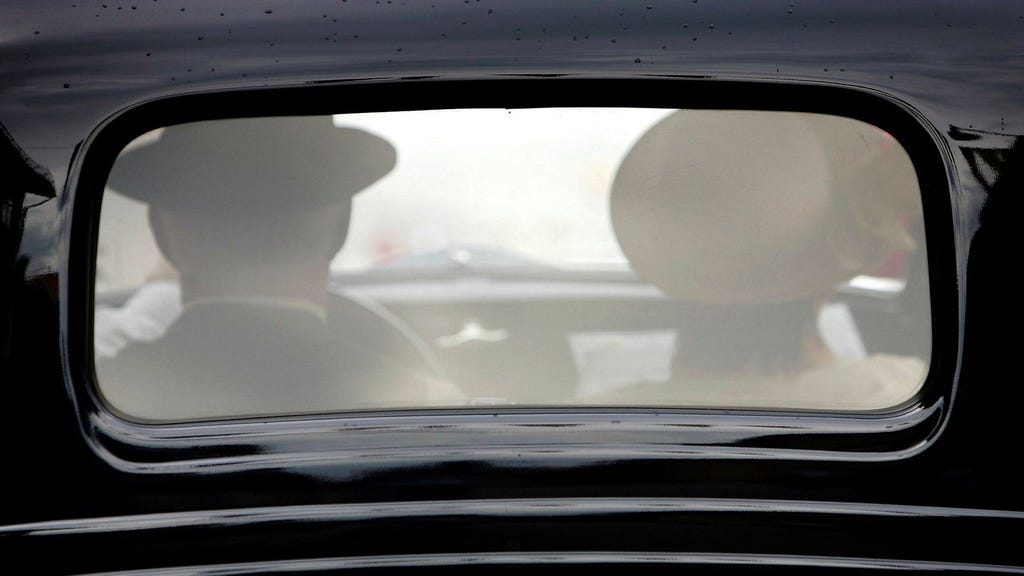A seemingly trivial observation from a childhood trip to Copenhagen in 1949 sparked a decades-long curiosity for the author. Traveling by train and ferry after a car malfunction, the author’s family arrived in Denmark for a celebratory occasion. Amidst the novelties of the city, including the bustling Tivoli Gardens and double-length buses, one detail stood out: the absence of rear windows in Copenhagen taxis. This peculiar feature became a recurring question posed to Danes over the subsequent 70 years, often met with confusion or vague recollections. Finally, an explanation emerged: cars without rear windows were classified as vans, benefiting from a lower tax bracket. This seemingly insignificant detail from the past gains new relevance with the recent announcement of a modern car model, also lacking a rear window, albeit replaced with a camera. This cyclical return to a design feature, initially driven by economic considerations, now presented as technological advancement, prompts reflection on the evolution of automotive design and its underlying motivations.
The author’s recollection of the 1949 trip is intertwined with the inconveniences of travel in that era. A flat tire necessitated abandoning their vinröd Dodge and boarding an overnight train to Malmö, where a sleeping car mix-up resulted in a cramped two-berth compartment instead of the reserved three-berth space. Upon arrival in Copenhagen, the family was further crammed into a van for transport to their final destination. These initial travel woes were contrasted by the lively atmosphere of Copenhagen, particularly the vibrant Tivoli Gardens, remembered as a confluence of dining Danes, imbibing Swedes, and a thrilling roller coaster that remarkably remains operational 75 years later. These sensory experiences, although fragmented by time, contribute to a nostalgic tapestry woven with the seemingly insignificant observation about the taxis.
The absence of rear windows in Copenhagen taxis, initially a fleeting observation, transformed into an enduring question mark for the author. Over the years, inquiries directed at Danes yielded predominantly puzzled expressions or faint, uncertain memories. The eventual explanation, attributing the missing windows to a tax loophole exploiting the classification of windowless cars as vans, offered a satisfying resolution to this decades-long puzzle. This anecdote illuminates how seemingly minor details can capture the imagination and persist in memory, prompting ongoing inquiry and ultimately revealing a glimpse into the social and economic context of a specific time and place. The author’s persistent curiosity underscores the power of observation and the value of seeking answers to even the most trivial of questions.
The recent unveiling of a new car model, devoid of a rear window and instead equipped with a camera, resonated deeply with the author’s childhood memory. This modern iteration of a feature once driven by financial expediency highlights the cyclical nature of innovation and the reimagining of old solutions in a new technological context. While the absence of a rear window in 1949 Copenhagen taxis was a cost-saving measure, its contemporary counterpart is presented as a technological advancement, replacing glass with a digital interface. This juxtaposition raises questions about the true nature of progress and the interplay between functionality, aesthetics, and economic considerations in automotive design.
The author further points to another milestone in car design: Saab’s 1993 release of the first car without an ashtray. This seemingly minor change reflects a significant shift in societal attitudes towards smoking, particularly within the confined space of a vehicle. In an era predating seatbelts and airbags, cars were essentially mobile smoking lounges. The eventual elimination of ashtrays signifies a growing awareness of the health risks associated with smoking and a move towards creating a healthier environment within vehicles. This development, like the evolving treatment of rear windows, illustrates how car design reflects broader societal changes and priorities.
The author’s anecdotal reflections on taxicabs, ashtrays, and technological advancements in car design serve as a lens through which to examine the interplay of memory, observation, and the evolution of technology. The seemingly trivial detail of a missing taxi window in 1949 Copenhagen becomes a thread connecting the past to the present, prompting reflections on how economic considerations and technological innovations shape the design and functionality of automobiles. The author’s persistent curiosity and the eventual explanation of the taxicab anomaly underscore the value of questioning and seeking understanding, even for seemingly insignificant observations. This anecdote, combined with the reflections on evolving car features, offers a nuanced perspective on the interplay of history, technology, and societal change, all stemming from a childhood memory sparked by a simple taxi ride.














